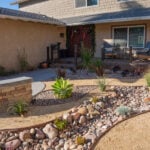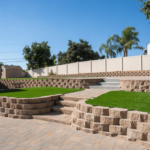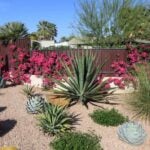Prioritizing Resource Conservation
In today’s time, sustainability and eco-friendly methods have become an important aspect of our lives. As we seek to minimize our impact on the environment, making a positive change in landscape design brings an excellent opportunity. Moreover, with the addition of sustainable and eco-friendly practices into landscape design, you can make a beautiful outdoor area that promotes environmental stewardship and harmony with nature. In this article you will explore different ways to add sustainability into landscape design, emphasizing the importance of preserving natural resources. All this while fostering a thriving ecosystem.
Understanding Sustainable Landscape Design
It is important to understand the concept of sustainable landscape design before going into specific practices. Therefore, adopting this approach makes you prioritize minimizing resource consumption, reducing waste, and creating ecosystems that can thrive with minimal human intervention. Enhancing overall ecological health, conserving water, promoting biodiversity, and patterns and processes found in nature are what sustainable landscape designs aim to mimic.
Building a Foundation
A thorough site assessment and careful planning are what a sustainable landscape designs foundation begins with:
- Study the environment: make sure to understand the climate, soil type, sunlight exposure, and existing flora and fauna in your region. Obtaining this information will guide you through your plant selection and design decisions.
- Optimize water management: find natural drainage patterns and potential water sources on your property. Through rain gardens, swales, or rain barrels plan to capture and utilize rainwater to reduce water wastage.
- Native plant selection: choose native plants that are well adapted to your region’s conditions. Usually, native plants require less water, fertilizer, and maintenance compared to non-native species.
- Reduce lawn areas: prioritize native groundcovers and meadow plantings and limit the size of lawns. This helps reduce the need to mowing and excessive water usage frequently.
Reducing Environmental Impact
Add sustainable materials to your landscape design to help reduce the environmental impact:
- Recycled Materials: choose materials from recycled content, such as recycled plastic lumber, concrete, or reclaimed wood for hardscape materials.
- Permeable Pavers: Use permeable pavers for driveways and walkways. Do it to allow rainwater to infiltrate the soil, replenishing groundwater levels.
- Salvaged or Reclaimed Materials: use materials like old bricks, stones, or timbers to utilize salvaged or removed materials. This helps add character and reduce the demand for new resources.
Enhancing Soil Health
One of the important practices is composting and mulching which helps improve soil health and reduce waste:
- Composting: compost enriches the soil with nutrients, increases its structure, and promotes healthy plant growth. Start a composting system for kitchen and garden waste.
- Mulching: mulching helps improve soil fertility as it breaks down over time. Add organic mulch around plants to retain moisture, suppress weeds, and insulate the soil.
Minimizing Water Consumption
Conserving water is a very important aspect of sustainable landscape design. Use water-saving techniques to minimize water consumption:
- Drip irrigation: reducing water loss through evaporation and runoff, delivering water directly to plant roots install a drip irrigation system.
- Rainwater harvesting: set up rain barrels or cisterns to help collect rainwater from rooftops. Make use of this harvested water for irrigation during dry periods.
- Group plants based on water needs: group plants that have the same requirements together to ensure efficient irrigation practices.
Illuminating Your Landscape
It is very important to have outdoor lighting to ensure safety and ambiance. It can also contribute to energy waste and light pollution too. Opt for energy-efficient lighting options:
- LED lights: by replacing traditional incandescent bulbs with energy-saving LED lights that consume less energy and have a longer lifespan.
- Motion sensors: to reduce unnecessary energy usage install motion sensors or timers for outdoor lighting.
- Solar-powered lights: considering to use solar powered outdoor lights that harness renewable energy from the sun is the way to go.
Preserving Eco-Friendly Features
Thoughtful maintenance to preserve its eco-friendly features is required for a sustainable landscape:
- Integrated pest management(IPM): opt for IPM principles to manage pests by putting to use natural predators, physical barriers, and biological controls, reducing the need for harmful chemicals.
- Organic fertilizers: the use of organic fertilizers promotes soil health without introducing harmful chemicals into the ecosystem.
- Seasonal plant care: make sure to understand the needs of your plants through the different seasons and provide the appropriate care they need accordingly.
Fostering a Thriving Ecosystem
A key element of sustainable landscape design is promoting biodiversity:
- Wildlife habitats: add birdhouses, bee hostels, and butterfly gardens to create a wildlife-friendly space and support the local wildlife.
- Pollinator gardens: add different types of flowering plants that attract bees, butterflies, and other pollinators to contribute to a healthy ecosystem.
- Native trees and shrubs: planting native trees and shrubs provide habitat and food sources to native birds and other wildlife.
Eco-Friendly Hardscaping
You can have sustainability in mind and can design using hardscape features such as patios, decks, and retaining walls:
- Green roofs and walls: add living walls and green roofs in your landscaping design to reduce stormwater runoff, and provide habitat for wildlife.
- Permeable surfaces: opt for permeable materials as mentioned earlier to minimize stormwater runoff and contribute to groundwater recharge.
Embracing Sustainability: Greener Future
It is a powerful way to contribute to environmental conservation and create beautiful outdoor spaces that align with nature’s principles by incorporating sustainable and eco-friendly practices and methods. The use of native plants, embracing water conservation techniques, selecting sustainable materials, and encouraging biodiversity, you can foster a thriving and flourishing ecosystem that supports local wildlife and conserves precious resources. Always remember that sustainability is a constant process and an ongoing strive to adopt eco-friendly practices will pave the way for a greener and more sustainable future. In today’s world, it’s essential and also trendy to follow eco-friendly and sustainable practices in your daily lifestyle. The same thing goes for your landscape design, by adding these practices and having a sustainable and eco-friendly landscape you will be benefiting your environment and the future. Therefore, add sustainability and eco-friendly methods to your landscape design.






